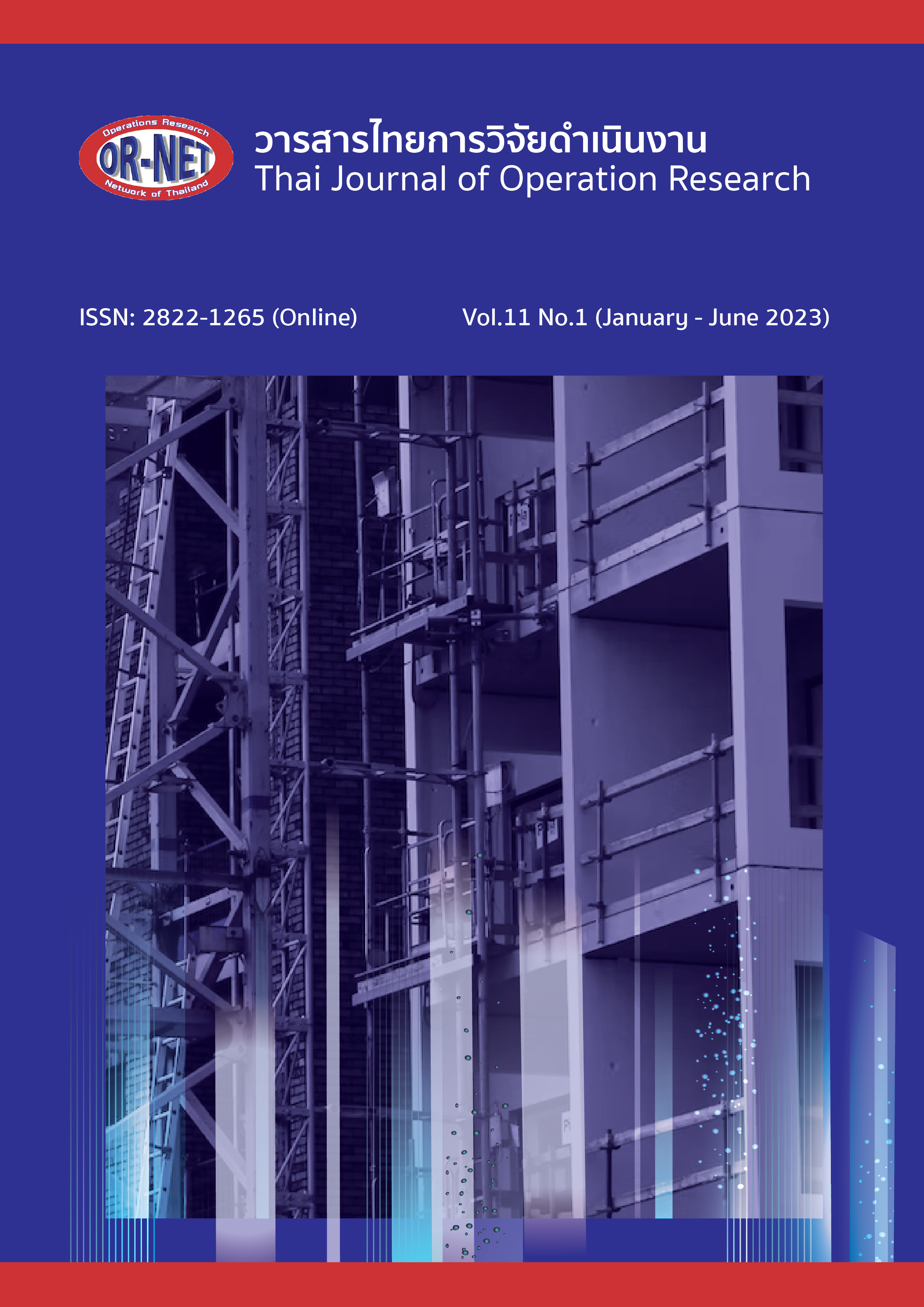Design of Experiments for Reduce Cycle Time of Plasma Cleaning on Surface of Flexible Printed Circuits
Keywords:
flexible printed circuits, low-pressure plasma, water contact angleAbstract
Flexible Printed Circuits (FPC) are important components for various electronic devices. Currently, customer demand tends to increase over time. For this reason, the company must increase output capacity to meet the needs of customers. FPCs are applied low-pressure plasma process in order to control the quality to be clean and enhance connectivity in electronic devices. The objectives are to increase output capacity by reducing the cycle time and to identify the effect of low-pressure plasma cleaning parameters on the Water Contact angle (WCA). It must not exceed 30degrees, which is in accordance with customer requirements. According to relevant researches, the factors affecting the optimizing of plasma parameters were plasma time, the power of the radio frequency, the flow rate of oxygen and the flow rate of argon. A central composite design was applied to design the experiments and response surface methodology was applied to analyze the experiments. The results revealed that the optimal parameters were a plasma time of 6.37 min, power of 4.20 kW, an oxygen flow rate of 0.10 l/min and an argon gas flow rate of 0.60 l/min. The average water contact angle does not exceed 10.357 degrees at a 95 percent confidence level. In addition, the plasma processing time was reduced from 16 minutes to 6.37 minutes, resulting in a 52.97 percent increase in plasma processing capacity.
References
C. Mandolfino, L. Cassettari, M. Pizzorni, S. Saccaroand and E. Lertora, “A design-of experiments approach to estimate the effect of plasma treatment parameters on the mechanical resistance of adhesive-bonded joints,” Journal of Manufacturing Processes., vol. 67, pp. 177-194, 2021.
อัจฉราภรณ์ บุญมา, “อิทธิพลของพลาสมาจากก๊าซต่อการดัดแปรคุณสมบัติพื้นผิวของฟิล์มพอลิแลคติกแอซิด,” วิศวกรรมศาสตรมหาบัณฑิต, สาขาวิชาวิศวกรรมเครื่องกล, มหาวิทยาลัยเทคโนโลยีสุรนารี, 2556.
M. B. Borooj, M. A. Shoushtari, A. Haji and E. N. Sabet, “Optimization of plasma treatment variables for the improvement of carbon fibers/epoxy composite performance by response surface methodology,” Composites Science and Technology., vol. 128, pp. 215-221, 2016.
M. Pizzorni, C. Gambaro, E. Lertora and C. Mandolfino, “Effect of process gases in vacuum plasma treatment on adhesion properties of titanium alloy substrates,” International Journal of Adhesion and Adhesives., vol. 86, pp. 113-122, 2018.
V. Luque-Agudo, M. Hierro-Oliva, A. M. Gallardo-Moreno and M. L. Gonz´alez-Martín, “Effect of plasma treatment on the surface properties of polylactic acid films,” Polymer Testing., vol. 96, 2021.
R. Kapica, J. Tyczkowski, J. Balcerzak, M. Makowski, J. Sielski and E. Worwa, “Enhancing adhesive joints between commercial rubber (SBS) and polyurethane by low-pressure plasma surface modification,” International Journal of Adhesion and Adhesives., vol. 95, 2019.
M. Gryta, “Application of polypropylene membranes hydrophilized by plasma for water desalination by membrane distillation,” Desalination., vol. 515, 2021.
Downloads
Published
How to Cite
Issue
Section
License

This work is licensed under a Creative Commons Attribution-NonCommercial-NoDerivatives 4.0 International License.




